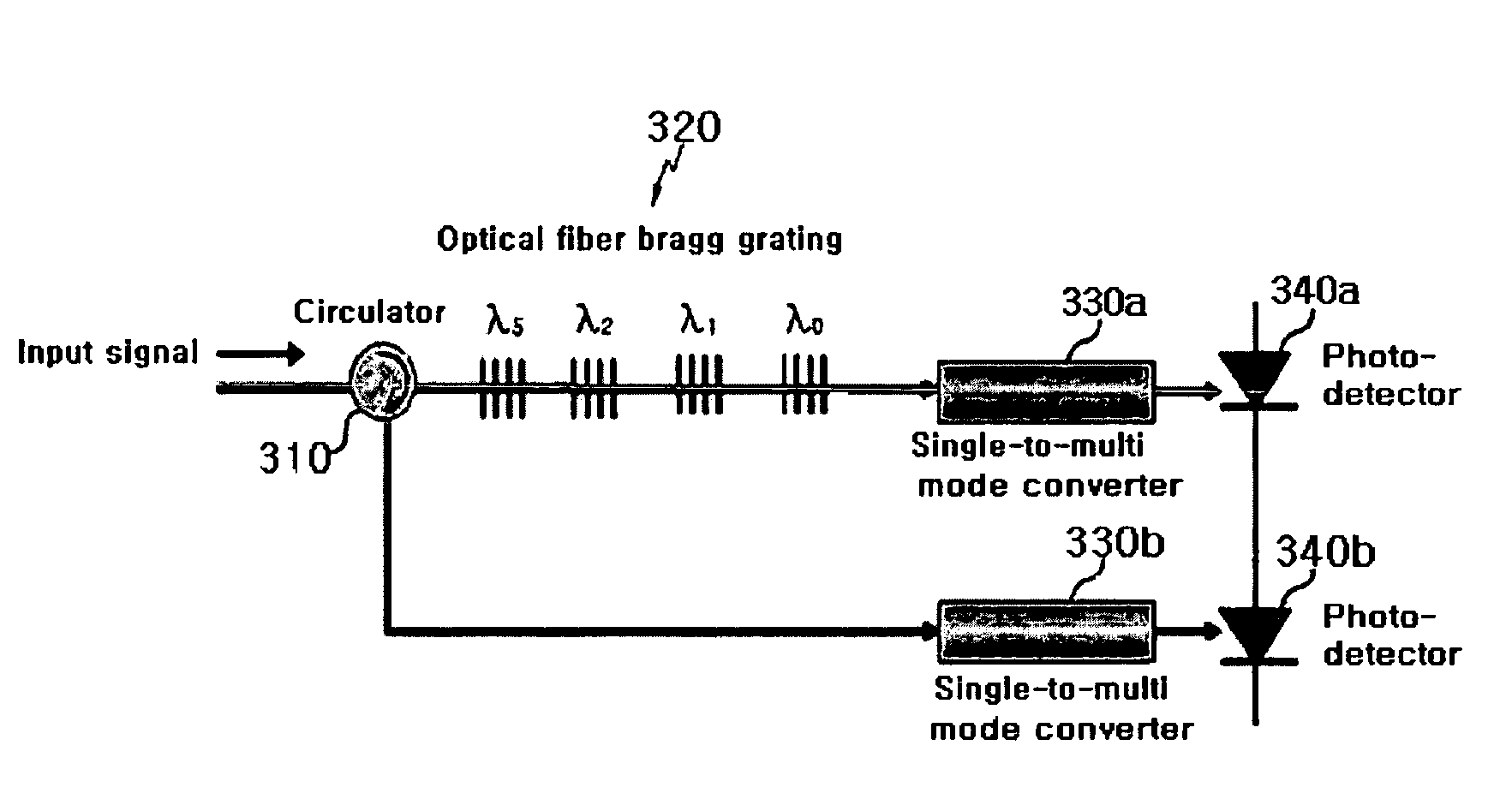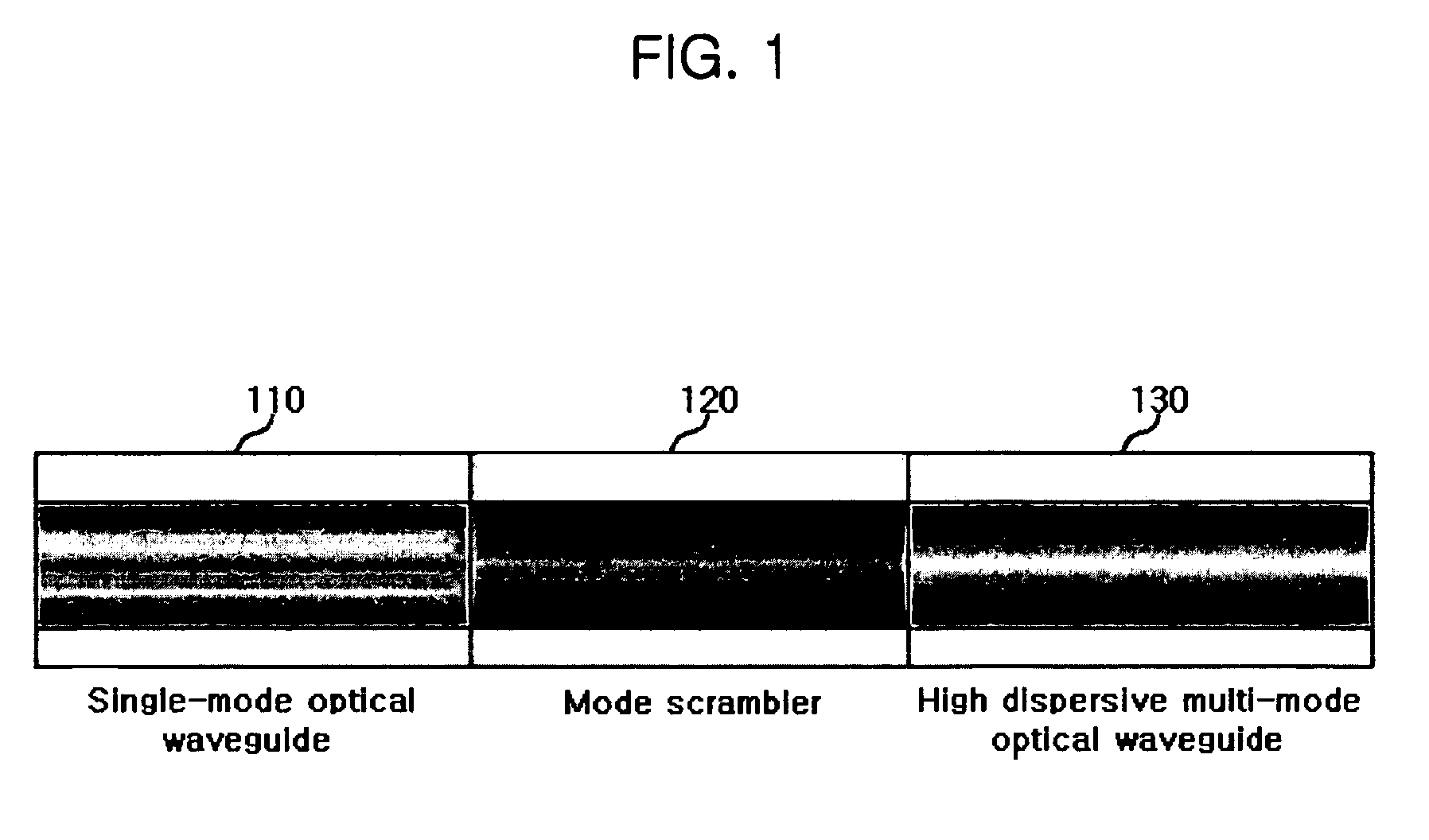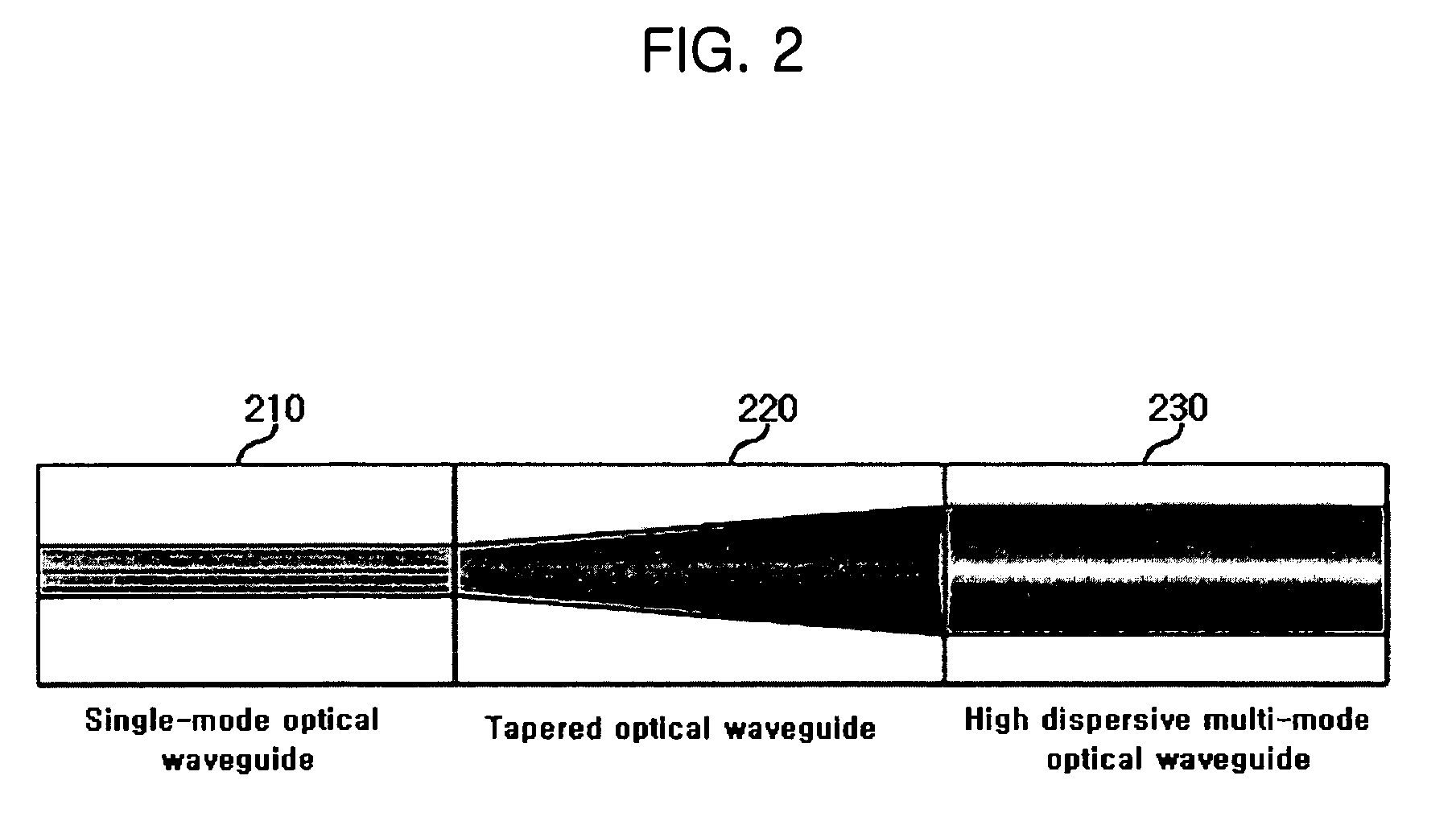Single-to-multi mode converter and optical code division multiple access system using the same
a converter and multi-mode technology, applied in the field of single-to-multi-mode converters, can solve the problems of difficult cutting and connecting processes, difficult to accurately align the axes of optical fibers with each other according to a designed value, and inconvenient uniform field distribution of a fundamental mode of single-mode optical fibers, etc., to achieve the effect of reducing excess noise and maximizing the number of multiple modes converted
- Summary
- Abstract
- Description
- Claims
- Application Information
AI Technical Summary
Benefits of technology
Problems solved by technology
Method used
Image
Examples
Embodiment Construction
[0037]In the following detailed description, only the preferred embodiment of the invention has been shown and described, simply by way of illustration of the best mode contemplated by the inventor(s) of carrying out the invention. As will be realized, the invention is capable of modification in various obvious respects, all without departing from the invention. Accordingly, the drawings and description are to be regarded as illustrative in nature, and not restrictive.
[0038]FIG. 1 illustrates a mode converter according to a first embodiment of the present invention. Referring to FIG. 1, the mode converter according to the first embodiment of the present invention includes a single-mode optical waveguide 110, a mode scrambler 120, and a multi-mode optical waveguide 130.
[0039]The single-mode optical waveguide 110 is formed of a single-mode optical fiber, and the multi-mode optical waveguide 130 is formed of a high dispersion multi-mode optical fiber. Accordingly, the mode converter ca...
PUM
 Login to View More
Login to View More Abstract
Description
Claims
Application Information
 Login to View More
Login to View More - R&D
- Intellectual Property
- Life Sciences
- Materials
- Tech Scout
- Unparalleled Data Quality
- Higher Quality Content
- 60% Fewer Hallucinations
Browse by: Latest US Patents, China's latest patents, Technical Efficacy Thesaurus, Application Domain, Technology Topic, Popular Technical Reports.
© 2025 PatSnap. All rights reserved.Legal|Privacy policy|Modern Slavery Act Transparency Statement|Sitemap|About US| Contact US: help@patsnap.com



